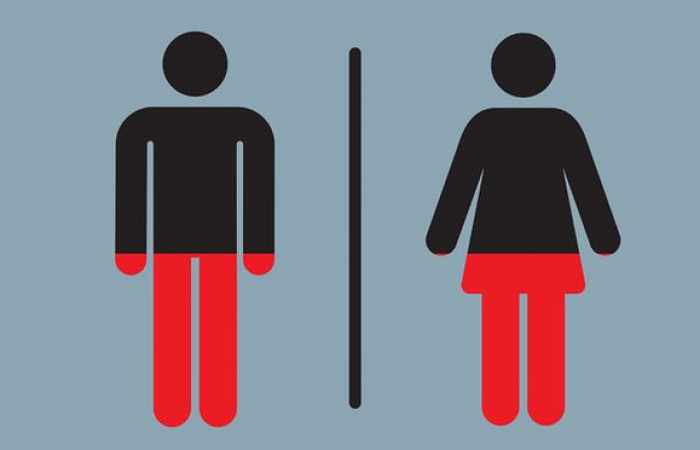Is it just women?
While statistics show that UTIs predominantly affect women, with one-third suffering a UTI before the age of 24 and one in 10 girls infected before the age of 16, they do affect men – especially when older – as a result of prostate problems. “I’m a bit suspicious that UTIs get overlooked in men, across the age range,” says Prof James Malone-Lee, who runs a specialist clinic for chronic UTIs at Whittington hospital in London. “But they are more common in women. There’s a peak when women become sexually active, and then a further increase in later life.”
How do these infections develop?
Scientists believe there is some element of genetic susceptibility because UTIs often run in families. “I’ve had a number of cases where I’ve treated the grandmother, the mother and the daughter,” Malone-Lee says. The common belief has been that these infections are caused by a single rogue bug invading the bladder, but some researchers are becoming increasingly sceptical about this because the healthy bladder isn’t sterile. Studies in the UK and US have measured more than 450 different bacteria in healthy bladders, while in patients with UTIs, about 600 bacteria have been measured.
“There appears to be some kind of perturbation in the balance of the microbes in the bladder, which contributes to these infections,” Malone-Lee says. “When we use DNA fingerprinting, we find the same kinds of bacteria in patients as in controls, but with some subtle variations. It’s possible that the infections could be the result of an upsurge in the numbers of a microbe that’s normally found in the bladder, but we don’t know for sure yet.”
How bad can it get?
Patients with acute UTIs such as cystitis are typically prescribed a short course of antibiotics. However, 20-30% of patients do not respond to these. If left unchecked, infections can become chronic and patients can end up in hospital with pyelonephritis. “This is a very severe urine infection where the kidneys are involved, and it requires an intravenous regime for two to three days,” Malone-Lee says. “The patients are very sick. They have very high temperatures, they’re vomiting, in a lot of pain, and if it isn’t brought under control, they can get septicaemia, which is life-threatening.”
Malone-Lee’s clinic specialises in what he describes as the “UTIs from hell” and he says one of the problems is that there is no contingency advice for doctors when patients with acute infections do not respond to treatment. “For the cases I see, on average it takes a year of antibiotic treatment to resolve their symptoms,” he says. “But there’s a wide variance. There are some people with infections we can’t get rid of, and we have to control the symptoms.”
Does water or cranberry juice help?
For decades, many have turned to cranberry juice as a means of curing UTIs. The perceived belief was that a compound in cranberries called proanthocyanidin is capable of inhibiting bacterial growth in the urinal tract, but recent research at Yale University suggests it is an urban myth. The study, done on 185 women living in nursing homes over the course of a year, found that cranberries had no notable effect on bacteria in urine.
Despite it being common GP advice, there is also little evidence that drinking water helps much at all as the bacteria responsible for the infection are either inside the cells of the bladder or attached to the cells via a slimy glue-like substance that they excrete, creating a biofilm. “You’re not going to wash them out,” Malone-Lee says. “But drinking water does dilute the urine, which means that when the patient gives a sample, the diagnostic tests that are typically used come back negative, making it appear that the patient has been cured.”
So should testing be improved?
Most GPs diagnose UTIs using standard urine culture and dipstick test diagnostics, but while cheap, these have been continuously criticised in the scientific literature for being too insensitive. “Studies in the US which tested these culture techniques misdiagnosed about 50% of acute cystitis cases,” Malone-Lee says. “In our clinic, we’ve repeated these experiments several times in people with chronic and recurrent UTIs and reached the same result. So you have this inaccuracy in the culture and you add to that the inherent inadequacies of the dipstick test itself.”
Malone-Lee believes that misdiagnosing patients who have a UTI as being all-clear is a particular problem because acute bladder infections need to be taken more seriously than they are. “There have been experiments on mice which show that if you hit these infections hard and aggressively at the beginning, you will clear them,” he says. “But if you don’t do anything, the microbes interact and alter the physiology of the bladder cells so they can invade and set up a chronic recalcitrant infection that is difficult to eradicate.”
In his clinic, he has found that a far more effective means of diagnosing UTIs has been to return to the original methods of the 1920s, which examined the numbers of white blood cells in the urine sample.“Ironically, the people who diagnose UTIs best are in the developing world because they examine the white cell count under microscopes,” he says. “It’s the cheapest option and has never been bettered as a diagnostic approach.”
Are there any other treatments on the horizon?
At the moment, the only solution for controlling and suppressing chronic UTIs is long-term antibiotics. As these infections typically hide inside the cells of the bladder or within biofilms, it can be impossible for antibiotics to eliminate them. However, scientists at University College London are investigating new means of targeting these infections using nanotechnology. Nanocapsules, containing an antibiotic, are easily taken up by bladder cells, thereby delivering a much larger dose of antibiotics specifically to the infected area, and all without any side-effects. These nanocapsules are likely to go into clinical trials in humans in two years’ time.
/The Guardian/
More about: #health
















































